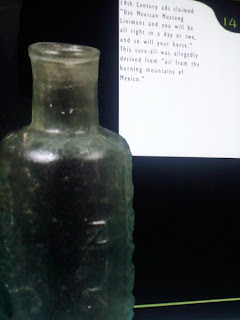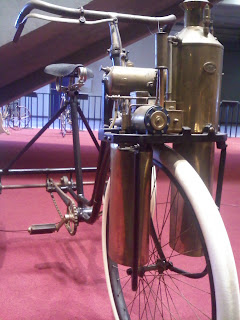


Charles Deering had two daughters, Marion Deering McCormick and Barbara Deering Danielson. Marion carried the merging of the Deerings and McCormicks beyond the level of business when she, much to her father's chagrin, became the wife of Chauncey McCormick. The grandson of William S. McCormick (founder of the McCormick Harvesting Machine Company), Chauncey was considered a bit of a playboy and Marion's parents apparently disapproved of their engagement, even denying the veracity of the public announcement. The couple seems, nonetheless, to have eloped; holding a religous ceremony at the Paris residence of her uncle James following a civil union in that city on July 6, 1914.
Chauncey, it was noted in the New York Times' coverage of the wedding (shown in part above), had apparently proved himself worthy by working his way up in the family business from the position of "day laborer". The article also noted that he had not seen his name in print since he was gored by a wild elk on the estate of P.R. Greist while a senior at Yale.
Barbara's nuptuals occured without any documented controversy. She wed Richard Ely Danielson, future editor and publisher of the Atlantic Monthly. He is noted for his affiliation with the Skull & Bone Society (1907), and while other information about him is scarce, his name often appears in association with conspiracy theories, secret societies, the Illuminati, the Rothchilds, etc. - giving him a profoundly more sinister image than that acheived by his brother-in-law's mere rakishness.
The Deering sisters inherited their father's vast collection of fine art following his death in 1927. Initially placing much of it on loan to the Art Institute of Chicago, it was later donated to become a part of the museum’s permanent collection. Deering's affinity for Spanish artists added a significant dimension to the AIC's existing inventory with magnificent works like Bernat Martorell's Saint George Killing the Dragon becoming signature pieces among the museum's aquisitions.
The Deering sisters inherited their father's vast collection of fine art following his death in 1927. Initially placing much of it on loan to the Art Institute of Chicago, it was later donated to become a part of the museum’s permanent collection. Deering's affinity for Spanish artists added a significant dimension to the AIC's existing inventory with magnificent works like Bernat Martorell's Saint George Killing the Dragon becoming signature pieces among the museum's aquisitions.
Barbara and Marion continued to follow in the footsteps of not only their father but also their grandfather, extending the family's legacy of philanthropy. In 1933, their endowments built the Deering Library - a massive neo-gothic structure housing over half a million books -at Northwestern University in Evanston, Illinois (see top left). Both Charles and his father William had been significant albeit anonymous patrons of the school from 1876 until their respective deaths. Brother Roger's bequest of $7,000,000 upon his death in 1936 was one of the largest donations ever made to an institution of higher learning at that time.
The Deering sisters also inherited their uncle James Deering’s lavish estate Villa Vizcaya following his death in 1925. They initially attempted to operate it as an attraction but were plagued by continuous repairs and restoration following the hurricanes of 1926 and 1935. They eventually sold Vizcaya to the county at a fraction of its value with the stipulation that it remain open to the public in perpetuity.




















